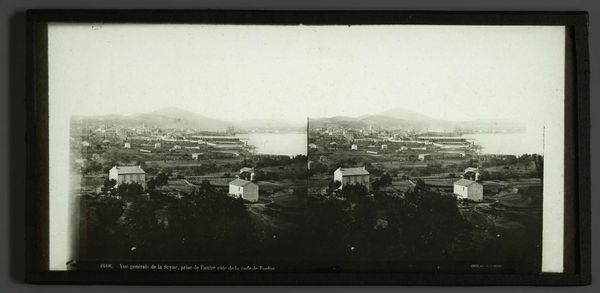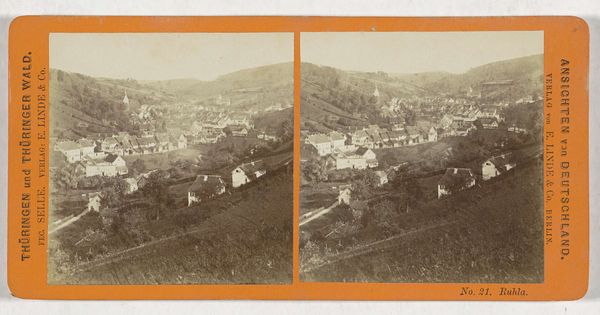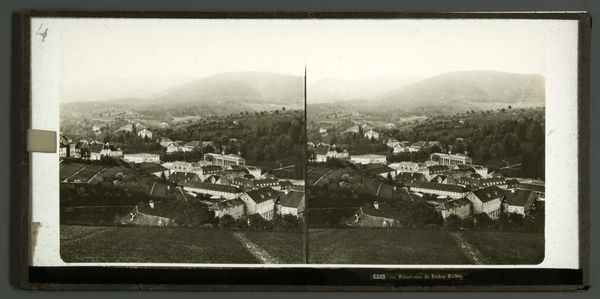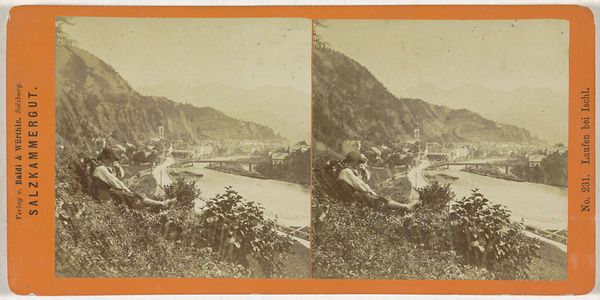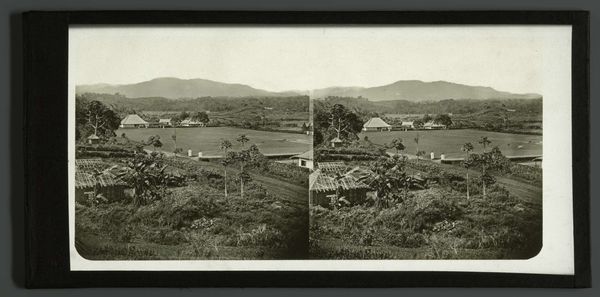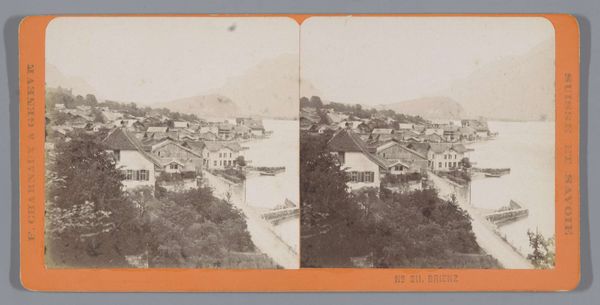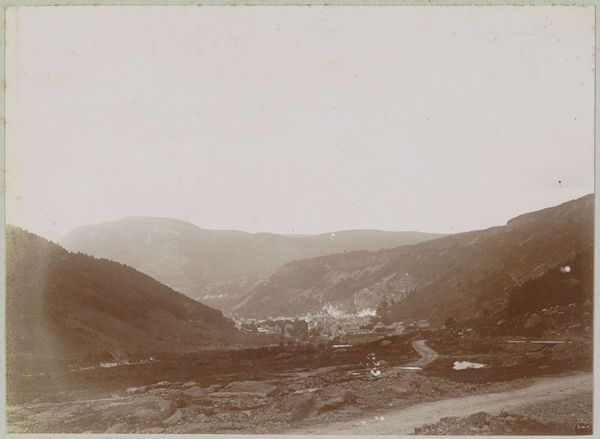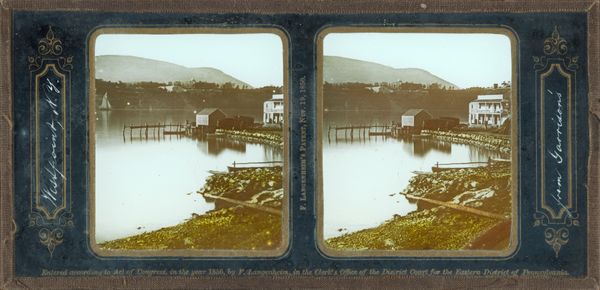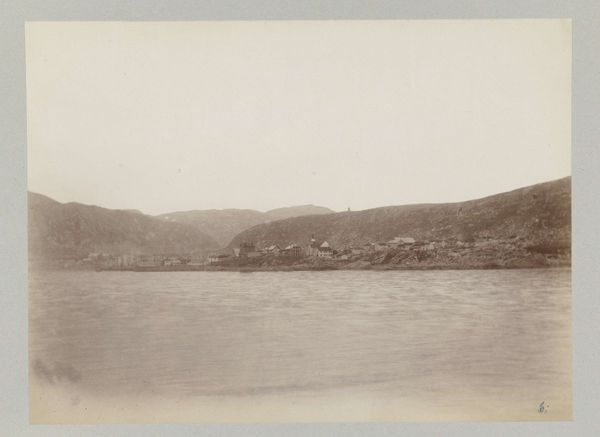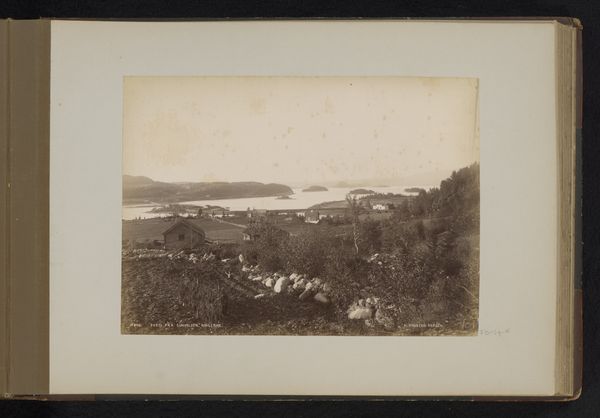
Dimensions: height 85 mm, width 170 mm
Copyright: Rijks Museum: Open Domain
This stereoscopic view of Bad Ems along the Lahn river, was created by Ferrier Père-Fils et Soulier. The photographic process itself bears consideration. Stereoscopic views were typically produced through a carefully controlled series of actions: from the initial image capture using a specialized camera with two lenses, to the development of the glass plate negatives, and finally the printing of the image onto photographic paper, meticulously mounted side-by-side on a card. The commercial success of such images depended on the efficient division of labor, with skilled technicians and factory workers collaborating to produce affordable and widely distributed images. This highlights the interplay between technology, labor, and consumption in shaping our understanding of the world. Stereoscopic images like this one contributed to the nineteenth-century culture of tourism. The medium enabled viewers to experience distant locations from the comfort of their homes, playing a crucial role in shaping perceptions of place, and promoting certain landscapes. Looking closely at the photograph through this lens, we can appreciate how the material and the making of the stereoscopic view are central to its cultural impact.
Comments
No comments
Be the first to comment and join the conversation on the ultimate creative platform.
